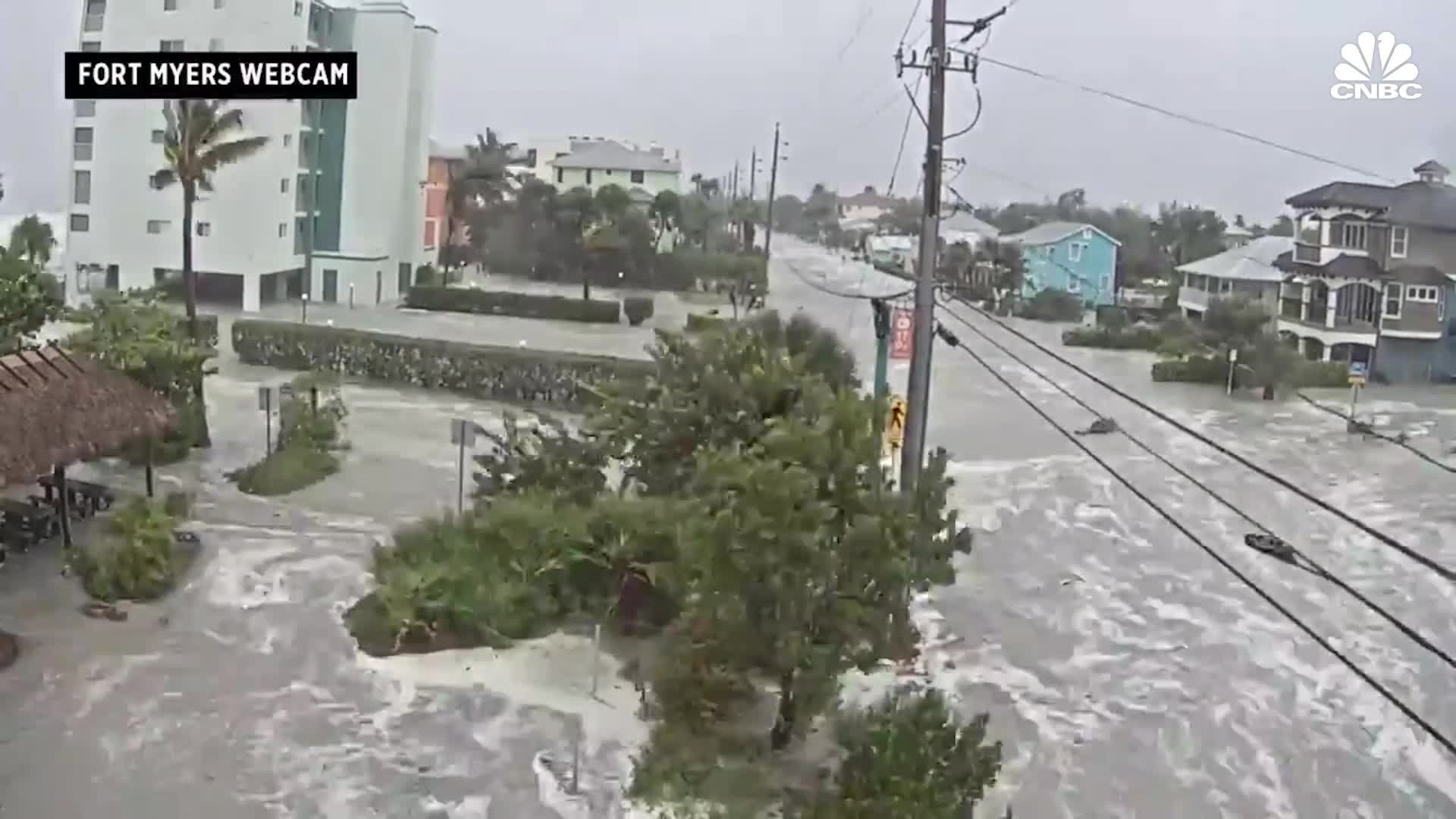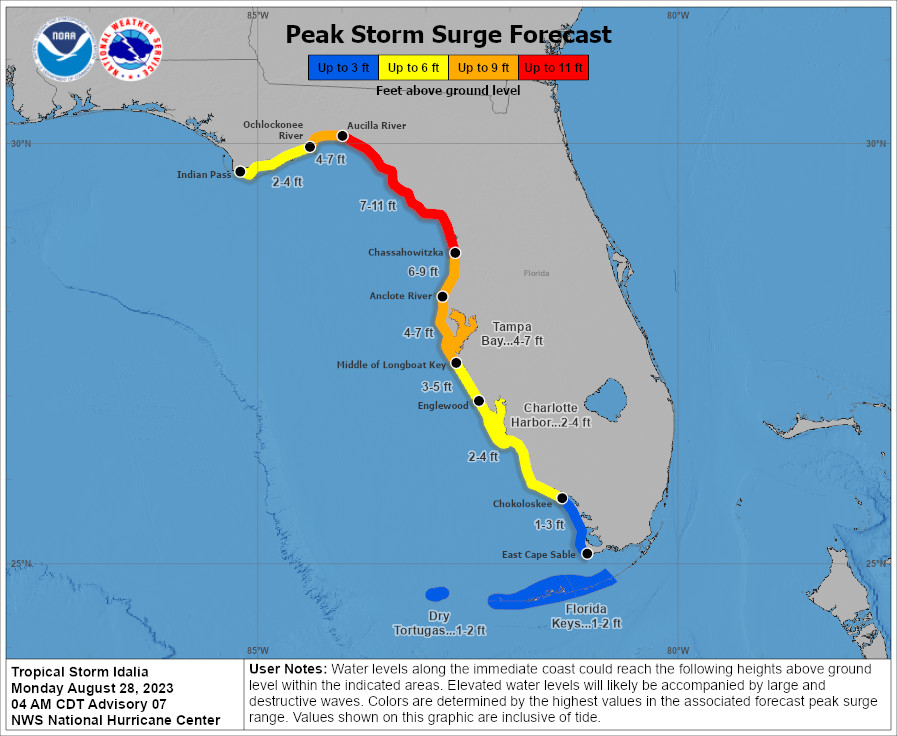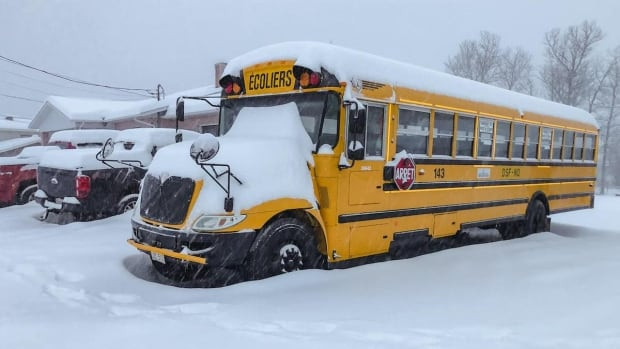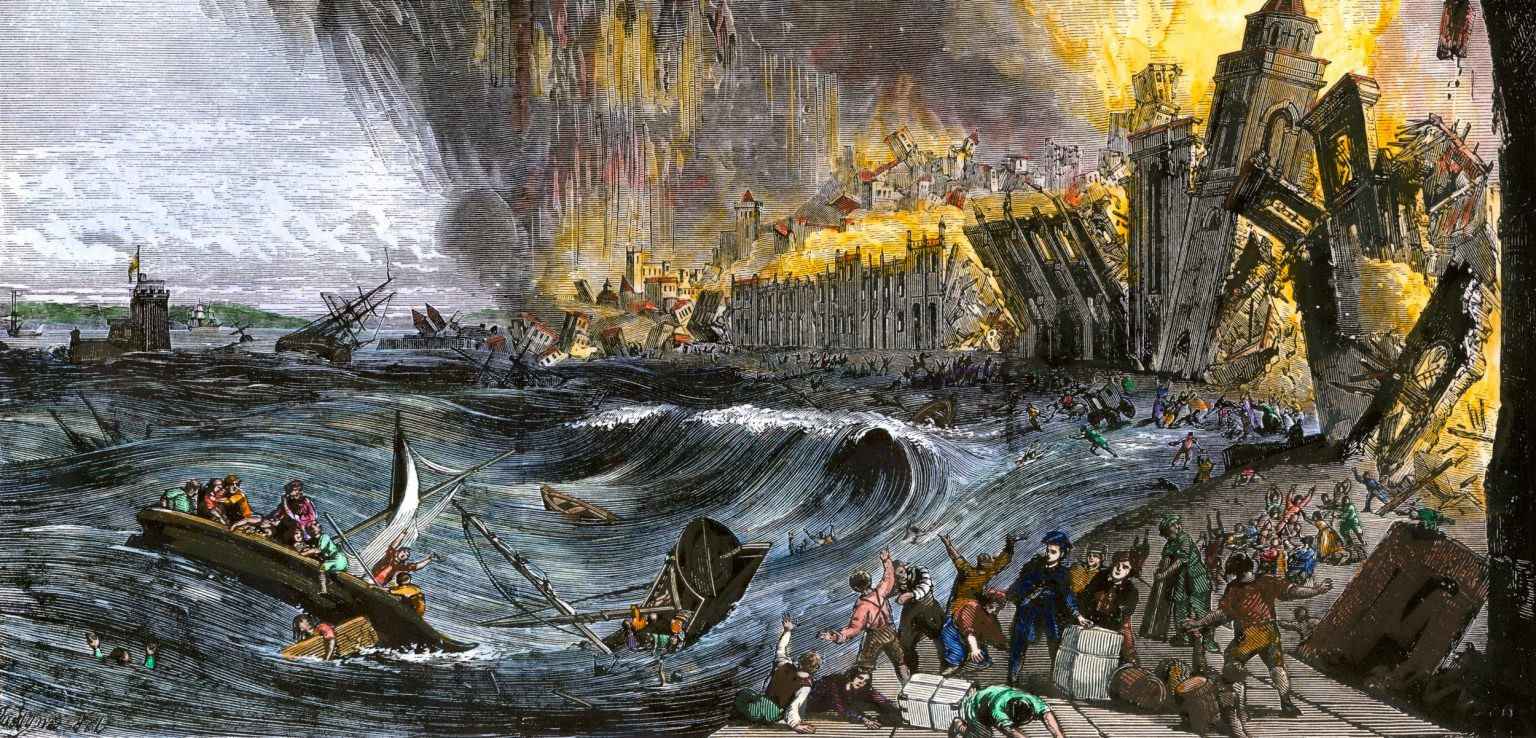A storm hitting Florida’s west coast could push an unsurvivable storm surge into densely populated areas
Florida is more susceptible to hurricanes than just about any other spot in North America. While any raging storm aiming for the Sunshine State is bad news, the state’s western shores are exceptionally vulnerable to dangerous flooding when a hurricane makes landfall.
Why Florida’s West Coast is Vulnerable
Destructive winds and flooding rains are a significant hazard in any storm approaching the coast. But it’s storm surge that often leaves the most devastation in a powerful hurricane’s wake.
Storm surge flooding is seawater pushed inland by the force of a storm’s intense and persistent winds. This flooding occurs quickly as a storm approaches landfall, potentially inundating coastal communities in under an hour.
A storm surge can reach more than 6 metres above ground level in the strongest hurricanes. This kind of surge is unsurvivable for folks in harm’s way. The deepest surge can completely inundate or even wash away a well-built home.
A 2023 study found that nearly half of all fatalities in landfalling hurricanes in the U.S. between 1963 and 2012 were the result of storm surge flooding. This includes hurricanes like Camille in 1969 and Katrina in 2005.
Multiple factors dictate the severity of storm surge flooding. The size, intensity, and duration of the storm all play a role, as do geographical considerations like the shape of the coastline and the type of terrain near the coast.
Florida’s western coast is a mix of swampy terrain, bays, and inlets that can allow a tremendous storm surge to rush ashore when a storm makes landfall.
Tampa Bay is extremely vulnerable due to its location, shape, and the region’s high population density. A direct strike on Tampa Bay could funnel an immense surge directly into the bay, forcing several metres of water to inundate Tampa’s downtown core as well as densely populated neighbourhoods throughout the region. Thousands of homes would be uninhabitable in the worst-case scenario.
Charlotte Harbor, which sits a little over 100 km to the south of Tampa Bay, boasts a similar shape that’s capable of funneling and amplifying a storm surge. Cape Coral and Fort Myers are also exposed to storm surge along the Caloosahatchee River.
Vast stretches of Florida’s western coast consist of low-lying, swampy terrain that offers little to no resistance against a hurricane’s storm surge flooding. The famous swamps of the Everglades make up much of Florida’s southwestern shores, while the Big Bend region north of Tampa Bay is one of the region's biggest marshlands.
Past Hurricanes and Future Risks
The last hurricane to directly hit Tampa Bay occurred in 1946, while the last major hurricane to hit the region struck all the way back in 1921. Why so long? It’s through a mixture of luck and climatology that few hurricanes directly threaten Florida’s west coast and the Tampa area in particular.
Most of the storms that form in the Gulf of Mexico or enter the Gulf from the south tend to head north, sparing western Florida and instead aiming for the state’s Panhandle or regions like Louisiana.
No stretch of coast is immune from hurricanes, though, and Florida’s western coast is no exception.
Hurricane Helene struck Florida’s Big Bend region in September 2024 with an estimated storm surge greater than 15 feet (4.5 metres) above ground level in places like Steinhatchee and Horseshoe Beach. That storm’s outer fringes pushed into St. Petersburg, where the Gulf of Mexico rose more than half a metre higher than the city's ever measured before.
Hurricane Charley made a direct landfall in Punta Gorda as a hulking Category 4 storm back in August 2004. The storm’s worst winds narrowly missed Charlotte Harbor, pushing a 1-2 metre storm surge into communities just south, including Sanibel Island and the city of Fort Myers.
Taking Precautions Against Storm Surge
While the threat of a direct hurricane hit to Tampa Bay is a concern, the potential for a significant storm surge event is always present. It is critical to understand the dangers of a storm surge and the steps that can be taken to prepare for it.
Understanding the Threat
Storm surge can be even more dangerous than the hurricane's winds. Here are some facts to keep in mind:
- Storm surge can move inland quickly. The flooding from a storm surge can occur in under an hour, leaving little time for people to escape the rising waters.
- The surge can be much higher than a normal tide. A storm surge can cause flooding that's much higher than the typical high tides, which can damage homes and businesses.
- Storm surge can occur far inland. The effects of a storm surge can be felt many miles from the coastline. This is especially true in areas where the geography funnels water into narrow bays or inlets.
Staying Safe During a Storm Surge
Here are some things you can do to stay safe during a storm surge event:
- Stay informed. Pay close attention to weather forecasts and warnings from local officials. Be sure to know your local evacuation routes and have a plan for where you will go if you need to evacuate.
- Listen to evacuation orders. If authorities order an evacuation, evacuate immediately. Do not wait until the last minute to leave.
- Stay away from low-lying areas. If you live in a low-lying area, consider moving to higher ground or staying with family or friends who live in a safer area.
- If you are caught in a storm surge, seek higher ground. Do not try to drive or walk through flooded areas. Flooded roads and waterways can be very dangerous and can hide debris that can cause injury.
- Do not try to outrun a storm surge. The flooding from a storm surge can move very quickly, and it is impossible to outrun it.
- Do not drive through flooded roads. The water may be deeper than you think, and it can easily sweep your car away.
- Watch for signs of flooding. If you see any signs of flooding, such as rising water levels or overflowing drains, be prepared to evacuate.
Preparing for a Storm Surge
While there's no way to prevent a storm surge, there are steps you can take to protect your home and property. Here are some tips to prepare for a storm surge:
- Elevate your home. If you are building a new home or making renovations, consider elevating your home to reduce the risk of damage from flooding.
- Install flood vents. Flood vents allow floodwaters to pass through your home while preventing water from entering your living space. Flood vents can be installed on your lower walls or in your crawl space.
- Move valuables to higher ground. Move important documents, electronics, and other valuables to higher floors or a storage unit.
- Buy flood insurance. Flood insurance can help cover the cost of damage to your home from flooding.
- Have an evacuation plan. Know your evacuation route and have a plan for where you will go if you need to evacuate.
- Be aware of the warning signs. Watch for warning signs of an impending storm surge, such as rising water levels, strong winds, and heavy rain.
- Listen to local officials. Follow the instructions of local officials. If they order an evacuation, evacuate immediately.
A Final Thought
The potential for a catastrophic storm surge event on Florida's west coast is a serious threat. It is important for all residents to be aware of the risks and to take the necessary steps to prepare for the possibility of a storm surge event. Being prepared can help you stay safe and avoid major damage to your home and property.


















